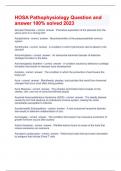Samenvatting
Samenvatting marketing 1e bachelor (18/20 gehaald)
- Vak
- Marketing
- Instelling
- Universiteit Antwerpen (UA)
Samenvatting van marketing in de eerste bachelor van TEW, handelsingenieur en SEW. De samenvatting is gemaakt op basis van alle lessen, slides en het boek. Het document is in het Engels geschreven met hier en daar wat Nederlandse woorden. Engels is niet mijn moedertaal dus kan misschien wel een paa...
[Meer zien]












